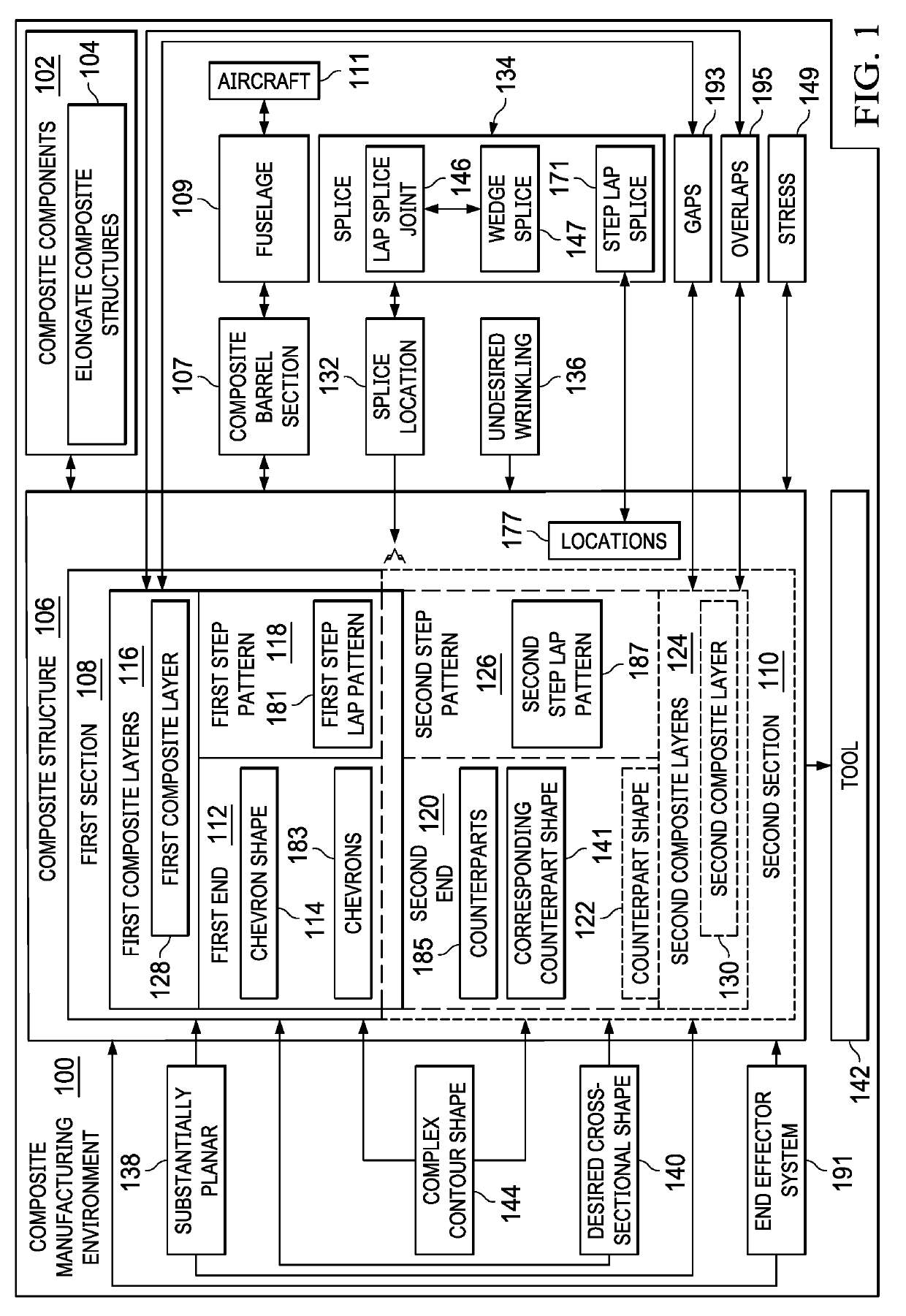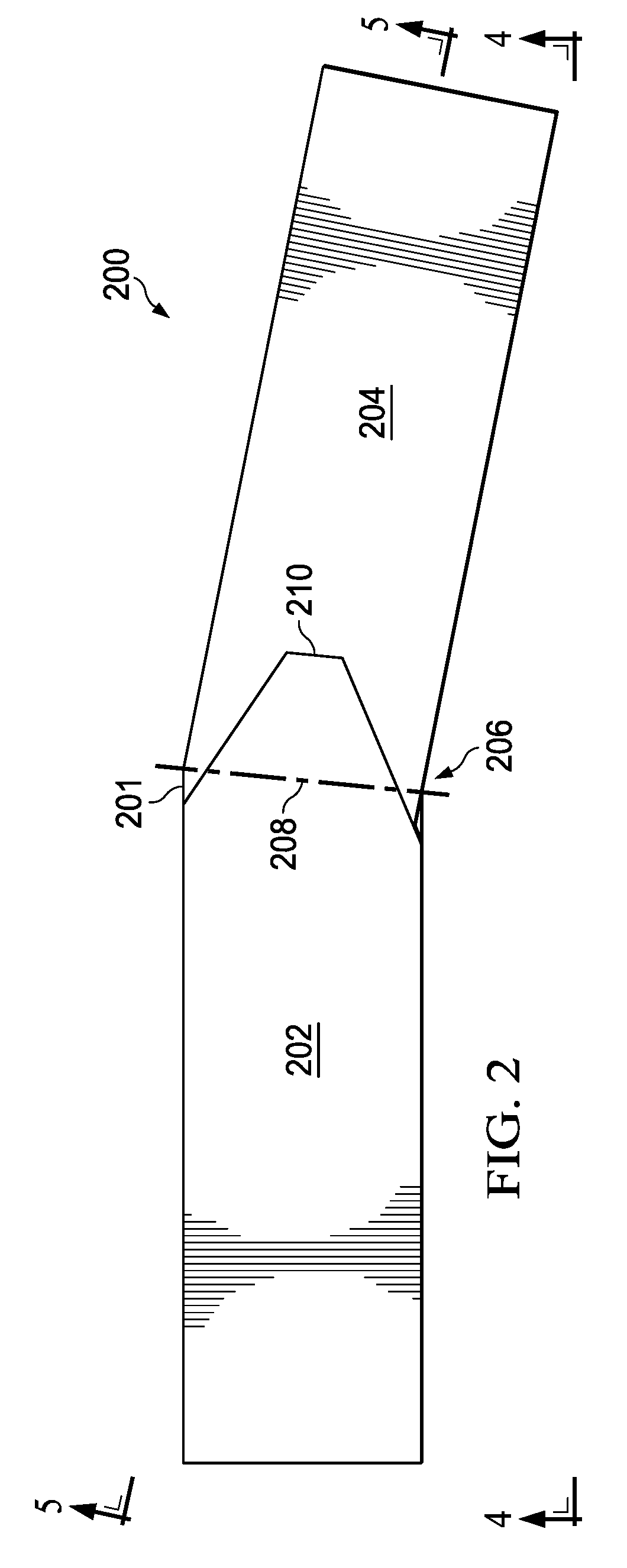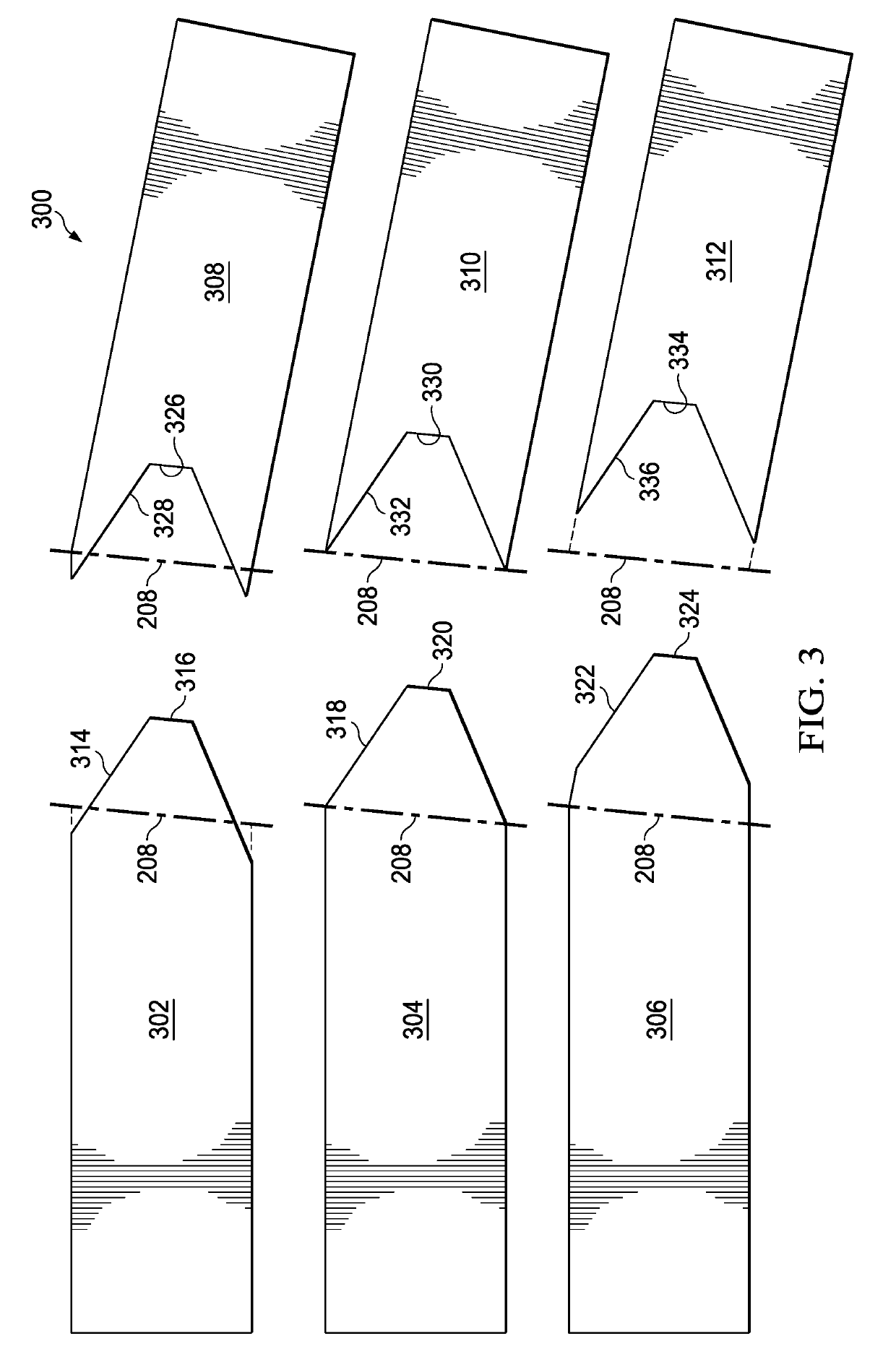Composite Structure Splice and Method
a composite structure and splicing technology, applied in the direction of fuselages, transportation and packaging, other domestic objects, etc., can solve the problems of large space occupation, labor-intensive process, and inability to fabricate these stiffeners using automated equipment, so as to reduce the amount of stress and reduce the undesired wrinkles of the composite structure
- Summary
- Abstract
- Description
- Claims
- Application Information
AI Technical Summary
Benefits of technology
Problems solved by technology
Method used
Image
Examples
Embodiment Construction
[0039]The illustrative embodiments recognize and take into account one or more different considerations. For example, the illustrative embodiments recognize and take into account that laying up composite materials in three-dimensional shapes to form composite structures can be more complex and time-consuming than desired. The illustrative embodiments also recognize and take into account that fabricating composite structures such as stringers with at least one of contours or twists can be performed in a semi-automated fashion. The equipment utilized, however, involves unique or custom tooling for the desired geometries.
[0040]Further, the illustrative embodiments recognize and take into account that splicing techniques can be utilized for stiffeners with perpendicular cuts. The illustrative embodiments recognize and take into account that this type of splicing may reduce some amount of wrinkling but does not fully address the occurrence of undesired inconsistencies such as wrinkling. ...
PUM
| Property | Measurement | Unit |
|---|---|---|
| Structure | aaaaa | aaaaa |
| Shape | aaaaa | aaaaa |
| Stress optical coefficient | aaaaa | aaaaa |
Abstract
Description
Claims
Application Information
 Login to View More
Login to View More - R&D
- Intellectual Property
- Life Sciences
- Materials
- Tech Scout
- Unparalleled Data Quality
- Higher Quality Content
- 60% Fewer Hallucinations
Browse by: Latest US Patents, China's latest patents, Technical Efficacy Thesaurus, Application Domain, Technology Topic, Popular Technical Reports.
© 2025 PatSnap. All rights reserved.Legal|Privacy policy|Modern Slavery Act Transparency Statement|Sitemap|About US| Contact US: help@patsnap.com



